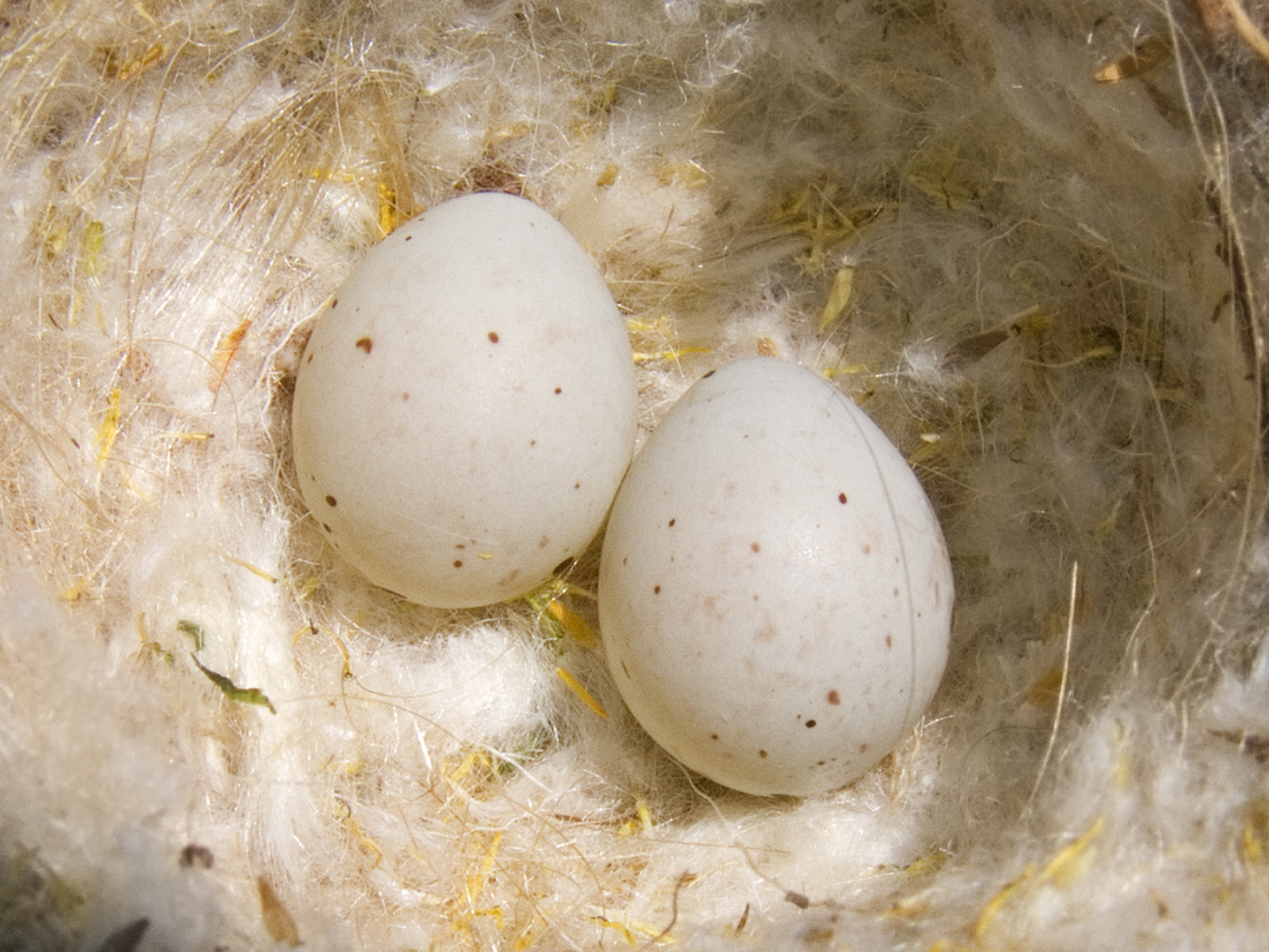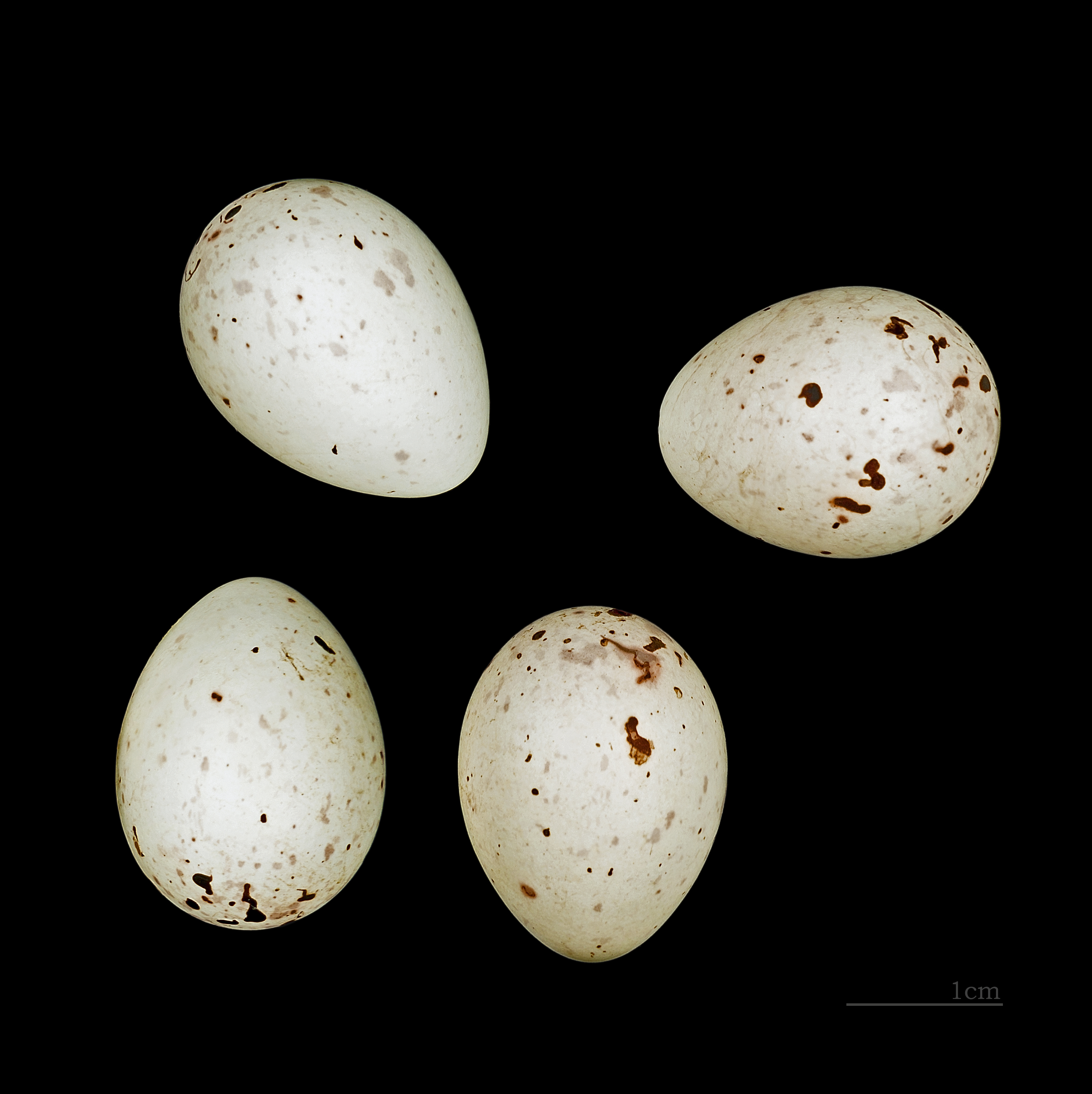|
Carduelinae
The cardueline finches are a subfamily, Carduelinae, one of three subfamilies of the finch family Fringillidae, the others being the Fringillinae and the Euphoniinae. The Hawaiian honeycreepers are now included in this subfamily. Except for the Hawaiian honeycreepers which underwent adaptive radiation in Hawaii and have evolved a broad range of diets, cardueline finches are specialised seed eaters, and unlike most passerine birds, they feed their young mostly on seeds, which are regurgitated.Newton, 1973, p. 31 Besides this, they differ from the other finches in some minor details of their skull. They are adept at opening seeds and clinging to stems, unlike other granivorous birds, such as sparrows and buntings, which feed mostly on fallen seeds. Some members of this subfamily are further specialised to feed on a particular type of seed, such as cones in the case of crossbills. Carduelines forage in flocks throughout the year, rather than keeping territories, and males defend the ... [...More Info...] [...Related Items...] OR: [Wikipedia] [Google] [Baidu] |
Fringillidae
The true finches are small to medium-sized passerine birds in the family Fringillidae. Finches have stout conical bills adapted for eating seeds and nuts and often have colourful plumage. They occupy a great range of habitats where they are usually resident and do not migrate. They have a worldwide distribution except for Australia and the polar regions. The family Fringillidae contains more than two hundred species divided into fifty genera. It includes species known as siskins, canaries, redpolls, serins, grosbeaks and euphonias. Many birds in other families are also commonly called "finches". These groups include the estrildid finches (Estrildidae) of the Old World tropics and Australia; some members of the Old World bunting family (Emberizidae) and the New World sparrow family (Passerellidae); and the Darwin's finches of the Galapagos islands, now considered members of the tanager family (Thraupidae).Newton (1973), Clement ''et al.'' (1993) Finches and canaries were us ... [...More Info...] [...Related Items...] OR: [Wikipedia] [Google] [Baidu] |
Hawaiian Honeycreeper
Hawaiian honeycreepers are a group of small, passerine birds endemic to Hawaii. They are closely related to the rosefinches in the genus ''Carpodacus'', but many species have evolved features unlike those present in any other finch. Their great morphological diversity is the result of adaptive radiation in an insular environment. Many have been driven to extinction since the first humans arrived in Hawaii, with extinctions increasing over the last 2 centuries following European discovery of the islands, with habitat destruction and especially invasive species being the main causes. Taxonomy Before the introduction of molecular phylogenetic techniques, the relationship of the Hawaiian honeycreepers to other bird species was controversial. The honeycreepers were sometimes categorized as a family Drepanididae,Clements, J. 2007. ''The Clements Checklist of the Birds of the World.'' 6th ed. other authorities considered them a subfamily, Drepanidinae, of Fringillidae, the finch fam ... [...More Info...] [...Related Items...] OR: [Wikipedia] [Google] [Baidu] |
European Goldfinch
The European goldfinch or simply the goldfinch (''Carduelis carduelis'') is a small passerine bird in the finch family that is native to Europe, North Africa and western and central Asia. It has been introduced to other areas, including Australia, New Zealand and Uruguay. The breeding male has a red face with black markings around the eyes, and a black-and-white head. The back and flanks are buff or chestnut brown. The black wings have a broad yellow bar. The tail is black and the rump is white. Males and females are very similar, but females have a slightly smaller red area on the face. The goldfinch is often depicted in Italian Renaissance paintings of the Madonna and Child. Taxonomy The European goldfinch was one of the birds described and illustrated by Swiss naturalist Conrad Gessner in his '' Historiae animalium'' of 1555. The first formal description was by Carl Linnaeus in the 10th edition of his ''Systema Naturae'' published in 1758. He introduced the binomial name, ... [...More Info...] [...Related Items...] OR: [Wikipedia] [Google] [Baidu] |
Grosbeak
Grosbeak is a form taxon containing various species of seed-eating passerine birds with large beaks. Although they all belong to the superfamily Passeroidea, these birds are not part of a natural group but rather a polyphyletic assemblage of distantly related songbirds. Some are cardueline finches in the family Fringillidae, while others are cardinals in the family Cardinalidae; one is a member of the weaver family Ploceidae. The word "grosbeak", first applied in the late 1670s, is a partial translation of the French ''grosbec'', where ''gros'' means "large" and ''bec'' means "beak". The following is a list of grosbeak species, arranged in groups of closely related genera. These genera are more closely related to smaller-billed birds than to other grosbeaks. Exceptions are the three genera of "typical grosbeak finches", which form a group of closest living relatives and might thus be considered the "true" grosbeaks. Grosbeak finches The finch family (Fringillidae) contains 13 ... [...More Info...] [...Related Items...] OR: [Wikipedia] [Google] [Baidu] |
Red Crossbill
The red crossbill or common crossbill (''Loxia curvirostra'') is a small passerine bird in the finch family Fringillidae. Crossbills have distinctive mandibles, crossed at the tips, which enable them to extract seeds from conifer cones and other fruits. Adults are often brightly coloured, with red or orange males and green or yellow females, but there is wide variation in beak size and shape, and call types, leading to different classifications of variants, some of which have been named as subspecies. The species is known as "red crossbill" in North America and "common crossbill" in Europe. Description Crossbills are characterized by the mandibles crossing at their tips, which gives the group its English name. Using their crossed mandibles for leverage, crossbills are able to efficiently separate the scales of conifer cones and extract the seeds on which they feed. Adult males tend to be red or orange in colour, and females green or yellow, but there is much variation. Identif ... [...More Info...] [...Related Items...] OR: [Wikipedia] [Google] [Baidu] |
Eophona
The Oriental grosbeaks (''Eophona'') are a genus of finches containing two species: The genus was introduced in 1851 by the English ornithologist and bird artist John Gould John Gould (; 14 September 1804 – 3 February 1881) was an English ornithologist. He published a number of monographs on birds, illustrated by plates produced by his wife, Elizabeth Gould, and several other artists, including Edward Lear, .... The name ''Eophona'' is derived from the classical Greek words ''ēōs'' meaning "dawn" and ''phōnē'' meaning "shout" or "cry". References Bird genera {{Fringillidae-stub ... [...More Info...] [...Related Items...] OR: [Wikipedia] [Google] [Baidu] |
Hooded Grosbeak
The hooded grosbeak (''Hesperiphona abeillei'') is a passerine bird in the finch family found in the highlands of Central America, principally in Mexico and Guatemala. This is a medium large grosbeak with a large bill. The male has a black head and bright yellow upper parts. The female is less brightly coloured and has a smaller black cap. The species was briefly described by the French naturalist René Lesson in 1839 under the binomial name ''Guiraca abaillei''. The International Ornithologists' Union now assigns the hooded grosbeak together with the closely related evening grosbeak to the genus ''Hesperiphona''. This genus was introduced by the French ornithologist Charles Lucien Bonaparte in 1850. Some authorities place these two grosbeak species together with the hawfinch in the genus ''Coccothraustes''. References External linksVideos and photos from the Internet Bird Collection {{Taxonbar, from=Q118917 hooded grosbeak Birds of Mexico Birds of Guatemala hooded grosbe ... [...More Info...] [...Related Items...] OR: [Wikipedia] [Google] [Baidu] |
Coccothraustes
The hawfinch (''Coccothraustes coccothraustes'') is a passerine bird in the finch family Fringillidae. It is the only species placed in the genus ''Coccothraustes''. Its closest living relatives are the Chinese grosbeak (''Eophona migratoria'') and Japanese grosbeak (''Eophona personata'') of East Asia, and the evening grosbeak (''Hesperiphona vespertina'') and hooded grosbeak (''Hesperiphona abeillei'') of North America. This bird breeds across Europe and temperate Asia (Palearctic). It is mainly resident in Europe, but many Asian birds migrate further south in the winter. It is a rare vagrant to the western islands of Alaska. Deciduous or mixed woodland, including parkland, with large trees – especially hornbeam – is favoured for breeding. The hawfinch builds its nest in a bush or tree, and lays 2–7 eggs. The food is mainly seeds and fruit kernels, especially those of cherries, which it cracks with its powerful bill. This large finch species is usually seen in a pair or ... [...More Info...] [...Related Items...] OR: [Wikipedia] [Google] [Baidu] |
Hawfinch
The hawfinch (''Coccothraustes coccothraustes'') is a passerine bird in the finch family Fringillidae. It is the only species placed in the genus ''Coccothraustes''. Its closest living relatives are the Chinese grosbeak (''Eophona migratoria'') and Japanese grosbeak (''Eophona personata'') of East Asia, and the evening grosbeak (''Hesperiphona vespertina'') and hooded grosbeak (''Hesperiphona abeillei'') of North America. This bird breeds across Europe and temperate Asia (Palearctic). It is mainly resident in Europe, but many Asian birds migrate further south in the winter. It is a rare vagrant to the western islands of Alaska. Deciduous or mixed woodland, including parkland, with large trees – especially hornbeam – is favoured for breeding. The hawfinch builds its nest in a bush or tree, and lays 2–7 eggs. The food is mainly seeds and fruit kernels, especially those of cherries, which it cracks with its powerful bill. This large finch species is usually seen in a pair o ... [...More Info...] [...Related Items...] OR: [Wikipedia] [Google] [Baidu] |
Pinicola
The pine grosbeak (''Pinicola enucleator'') is a large member of the true finch family, Fringillidae. It is the only species in the genus ''Pinicola''. It is found in coniferous woods across Alaska, the western mountains of the United States, Canada, and in subarctic Fennoscandia and across the Palearctic to Siberia. The species is a frugivore, especially in winter, favoring small fruits, such as rowans (mountain-ashes in the New World). With fruit-crop abundance varying from year to year, pine grosbeak is one of many subarctic-resident bird species that exhibit irruptive behavior. In irruption years, individuals can move long distances in search of suitable food supplies, bringing them farther south and/or downslope than is typical of years with large fruit crops. Taxonomy The pine grosbeak was formally described in 1758 by the Swedish naturalist Carl Linnaeus in the tenth edition of his ''Systema Naturae'' under the binomial name ''Loxia enucleator''. The type locality is Sw ... [...More Info...] [...Related Items...] OR: [Wikipedia] [Google] [Baidu] |
Chinese Grosbeak
The Chinese grosbeak or yellow-billed grosbeak (''Eophona migratoria'') is a species of finch in the family Fringillidae. Taxonomy Subspecies include: * ''Eophona migratoria migratoria'' (Eastern , and ); * ''Eophona migratoria sowerbyi''( East-central ) Distribution and habitat This species is present in |
Japanese Grosbeak
The Japanese grosbeak (''Eophona personata'') or Ikaru is a finch native to the East Palearctic. It is also sometimes referred to as the Japanese or masked hawfinch due to superficial similarities to the well-known Hawfinch, Eurasian species. Description This is a large finch, with a reported weight of (for a single male) and a length of . Among standard measurements, the Wing chord (biology), wing chord is , the tail is and the Culmen (bird), culmen is . The signature feature of the Japanese grosbeak is its large, pointed bright yellow bill. The adult grosbeak has a large black marking extending from the nape to the chin and ear-coverts to the neck. The side of the neck is a contrasting pale whitish grey. The bird's underside is a more dull grey. The back is greyish-brown while the flanks are washed with a gingery or tawny-brown colour. The wings and tail are black but for a white patch on the inner-coverts and band of white in the middle of the primaries, which is visible ... [...More Info...] [...Related Items...] OR: [Wikipedia] [Google] [Baidu] |






_juvenile_2.jpg)
